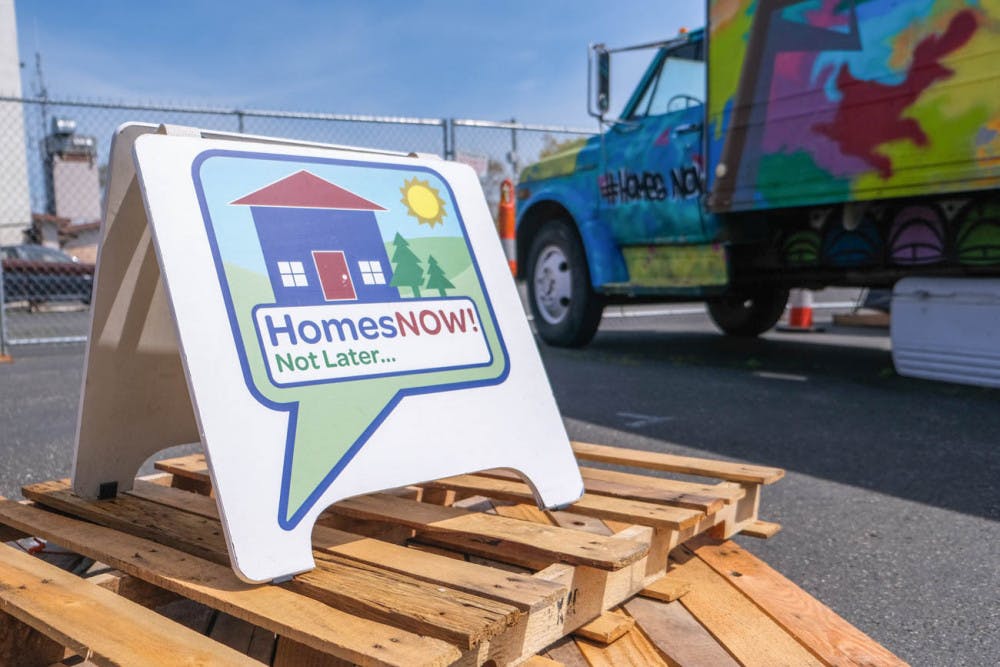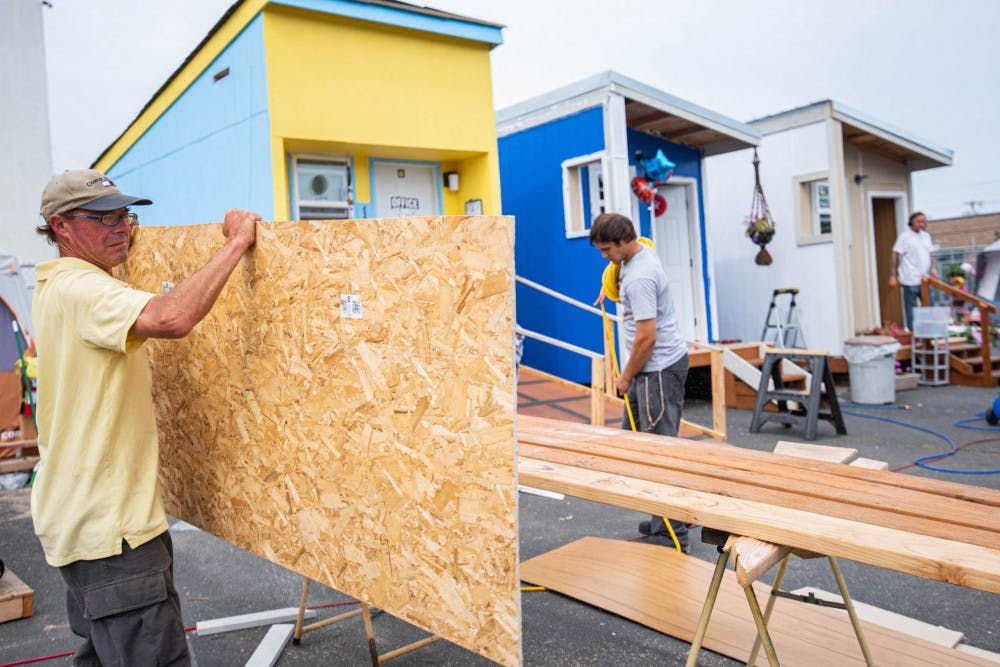Unemployment, lack of housing and COVID-19 contributing to countywide struggle.
By Taylor Bayly

Bellingham residents to experience harsh economic penalties as the statewide lockdown could exacerbate Whatcom County’s already staggering poverty rate.
A new report from the West Coast Poverty Center, a cross disciplinary center at the University of Washington focusing on anti-poverty research, used data evidence from the 2008 financial crisis to predict what effect COVID-19 will have on unemployment and poverty rates in Washington.
An already difficult situation in Whatcom County was worsened by the pandemic. According to the Employment Security Department, Whatcom County’s unemployment rate in April reached 17.7%, slightly higher than the state unemployment rate at 15.4%. The poverty rate in Bellingham reached a staggering 21.8% in 2019, according to the U.S Census Bureau.
Jennie Romich, who has a doctorate in human development and social policy, is a professor at the University of Washington’s School of Social Work and the director of the West Coast Poverty Center. She researches poverty mitigation and the economics of low-income, working class communities.
Romich’s research indicates that the rising unemployment due to COVID-19 pandemic could significantly increase the number of Washington residents living in poverty. At the height of the lockdown in April, over 181,000 unemployment claims were filed statewide in just one week.
Poverty in the U.S is measured using a model called the federal poverty threshold. The Institute for Research on Poverty defines poverty thresholds as the “dollar amounts set by the U.S. government to indicate the least amount of income a person or family needs to meet their basic needs.”

A poverty reduction workgroup, commissioned by Governor Jay Inslee, uses 200% of the federal poverty threshold as a baseline for their research. The poverty reduction workgroup states that 200% of the federal poverty threshold is the minimum needed for most Washington residents to meet their basic needs.
A family of three needs an annual income between $21,330 and $42,660 to live above the poverty threshold. As of January 2020, one in four Washington residents, or 1.8 million people, live in poverty, according to the workgroup’s report.
According to Romich’s research, there was a correlation between unemployment and the state’s poverty rate during the last recession in Washington. For every one percentage point unemployment increased by, the poverty rate increased by slightly over half a percentage point.
If the unemployment rate were to reach 20%, then the workgroup’s report suggests over one in three Washington residents, or 2.58 million people, could go into poverty.
But for Bellingham, things could be even more serious.
Before the pandemic, Whatcom County’s poverty rate at 14.9% was higher than the national poverty rate of 11.8% due to shortages of affordable housing and economic opportunities, according to U.S. Census Bureau data.
The economic impact of the pandemic could compound on Whatcom County’s pre-existing economic issues, such as its high poverty rate and homelessness population.
Bridget Reeves serves as the director of programs at the Lighthouse Mission in downtown Bellingham, and has worked there for over 10 years. In San Diego, she worked as a street minister, helping homeless and socioeconomically vulnerable populations.
“There are so many unique barriers for each person,” Reeves said. “For many, it’s difficult to find a job that pays enough to cover housing. There’s also a low vacancy rate that is so tough for many of our folks.”
Whatcom County’s vacancy rates for apartments was 0.24% in the second quarter of 2018, according to the Washington State Apartment Market Report. Nationally, the vacancy rate for rental housing in the second quarter of 2018 was 6.8%, according to the U.S. Census Bureau data.
In 2019, The Opportunity Council, a private non-profit agency in Bellingham serving low-income community members, surveyed people to determine the factors that contributed most to their homelessness.
Almost half of the participants (43%) identified eviction or loss of housing as the most significant cause of homelessness. Over a third (31%) of the participants cited job loss or unemployment. Mental illness, substance abuse, domestic violence and physical health or disability are contributing factors, according to the report.
In response to the COVID-19 pandemic, Gov. Jay Inslee placed a moratorium on evictions that is set to expire on Aug. 1.
“Every time rent goes up, you can see that the homeless rate ticks up just a little bit more,” said Doug Gustafson, director of HomesNow!, a nonprofit that constructs transitional housing for homeless Bellingham residents.
“You got to treat people like adults, and then you got to let them rise to the occasion,” he said. “Give people a hand up and the basics, because [they] want to get back to their lives. Nobody wants to be camping in the woods or anything like that.”
Other factors contributing to high poverty rates include stagnant wages, high rent and occupancy rates. According to RentJungle, the average rent for an apartment in Bellingham in June 2020 was $1235. That represents a 9.39% increase from the previous year when the average rent was $1119.
Workers in the Bellingham metropolitan area had an average hourly wage of $24.23, which is about 6% below the nationwide average of $25.72 according to the U.S. Bureau of Labor Statistics.
Reeves said that some rental practices, specifically when landlords review rental history or require cosigners, keep people out of housing.
“Some of our people don't have that amount of support in their life, family support or otherwise, to have that cosigner,” Reeves said.
Romich noted that COVID-19 severely disadvantages people of color, especially undocumented immigrants. The Pew Research Center estimates that there are 5,000 unauthorized immigrants living in Bellingham, with a margin of error of 4,000.
According to Romich, a household is ineligible for federal relief aid if a parent is undocumented, even if their child is a U.S citizen.
“One of the real weaknesses of the federal response to the coronavirus was they left out a lot of immigrant households,” she said. “[They] are left out fully from the CARES Act funding.”
Romich believes that economic relief packages, such as the federal stimulus checks and an additional $600 a week in unemployment funding, limited the brunt of the pandemic for many Washington residents.
“Those efforts, as far as we can tell, buffered a lot of people from the effects of poverty,” she said. “People need a safety net when the world drops out from underneath them. I don't think there's anybody going into a global pandemic saying we don't need the government.”





